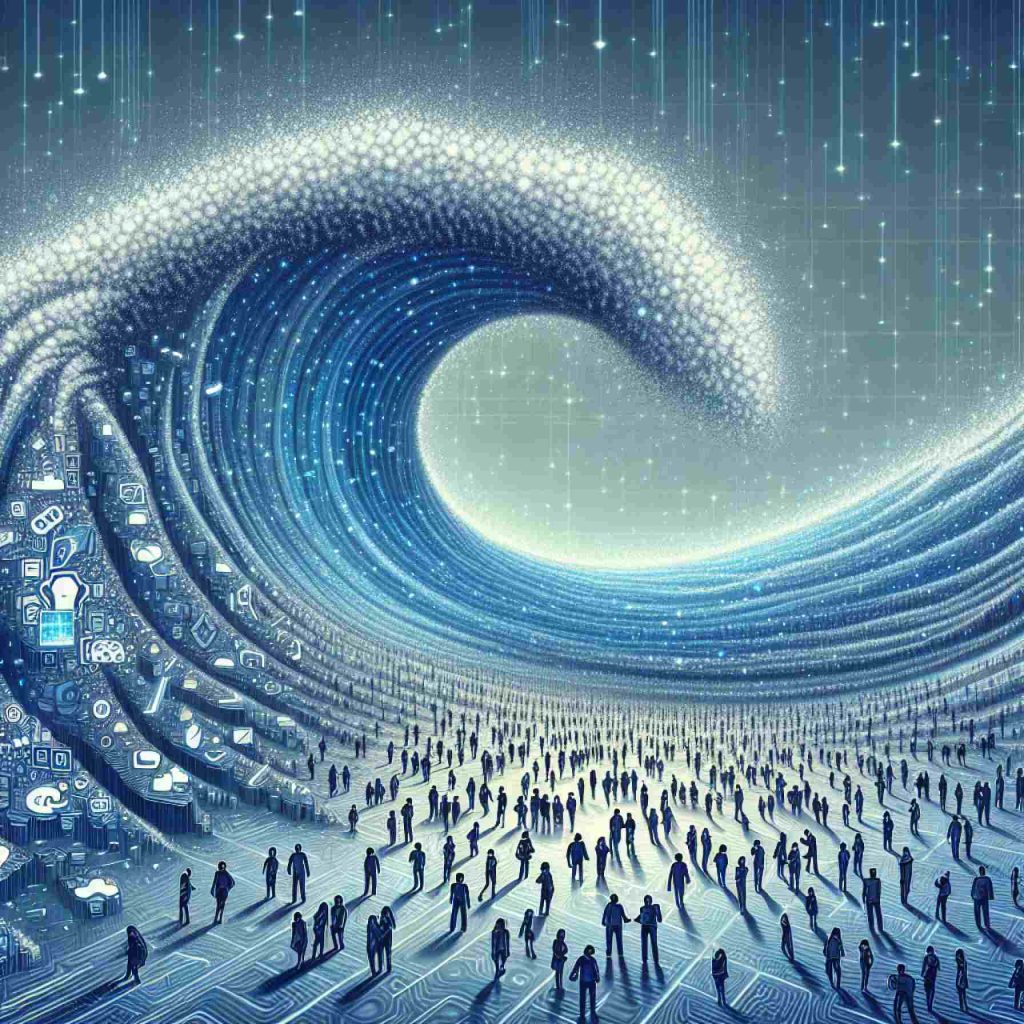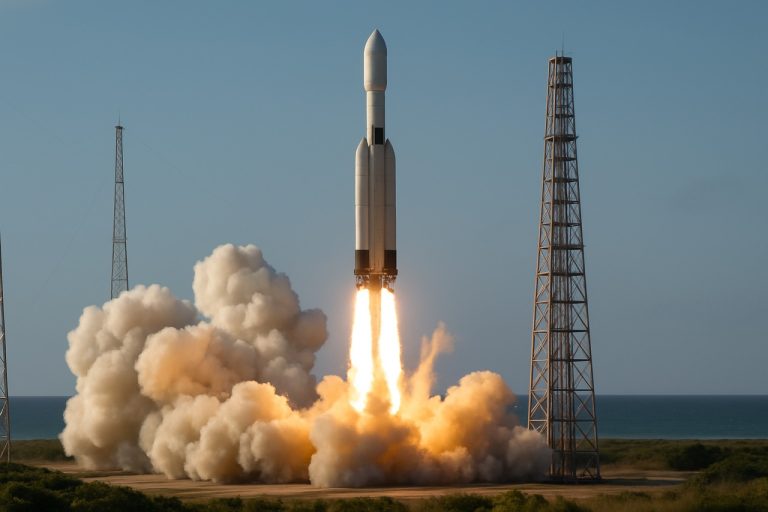
- The crypto art market is rapidly expanding, merging artistry with technology via blockchain and non-fungible tokens (NFTs).
- Blockchain technology offers a decentralized platform ensuring the security and authenticity of digital art, appealing to global collectors.
- NFTs revolutionize the art scene by validating ownership and provenance, empowering artists to monetize works and connect with patrons directly.
- The participation of famous creators and celebrities boosts market credibility, attracting a broad audience to this digital transformation.
- Crypto art promotes accessibility and inclusivity, enabling artists worldwide to exhibit creativity beyond traditional gallery confines.
- Challenges remain, such as understanding blockchain and high initial investments, but the potential benefits drive innovation and engagement.
- This shift highlights a pivotal change, emphasizing art’s limitless evolution through technological advancement and digital integration.
In a mesmerizing blend of artistry and technology, the crypto art market is gaining momentum like never before. This dynamic new frontier of art creation and collection goes beyond traditional boundaries, driven by the unprecedented rise of blockchain technology and non-fungible tokens (NFTs). Envision a world where art isn’t just seen; it’s owned digitally, tracked securely, and traded effortlessly across borders. This is the vibrant reality that’s reshaping the global art landscape.
The engine powering this transformation is blockchain’s immutable ledger, offering artists and collectors a decentralized platform that guarantees security and authenticity. No more will art’s worth be shadowed by questions of legitimacy; every brush stroke and digital glitch is etched into a decentralized code. This newfound security draws collectors from every corner of the globe, creating a bustling marketplace rich with possibilities.
But it’s the NFT phenomenon that truly revolutionizes the playing field. Once a murmur among tech enthusiasts, NFTs now roar through the corridors of art galleries and auction houses. These cryptographic tokens validate ownership and provenance, giving digital art a new status. Artists find liberation in this system, where they can monetize their works, reclaim royalties, and connect directly with patrons—all without the gatekeepers of conventional galleries.
Famous creators and celebrities are leaping into this space, their presence both a catalyst and a testament to the market’s bright future. Their participation injects mainstream credibility, attracting investment and stimulating interest from a diverse audience eager to partake in this digital renaissance. The allure of crypto art extends beyond mere ownership; it’s about experiencing art in a transformative way. Virtual and augmented reality open portals to immersive worlds, making art an experience, not just a commodity.
However, the rise of crypto art isn’t only about glitz and high-profile names. It represents a profound shift towards accessibility and inclusivity. Decentralized markets dismantle the walls of elitism, allowing artists from all backgrounds to showcase their creativity on a global stage. The world of art is no longer confined to brick-and-mortar galleries; instead, it flourishes in a vibrant digital ecosystem—one that promises broader reach and richer engagement.
This, however, is not without its hurdles. The path to mainstream adoption requires navigating the challenges of high initial investments and understanding the technical aspects of blockchain. Yet, the potential rewards overshadow these obstacles, signaling a promising horizon for those willing to innovate and adapt.
Ultimately, the meteoric rise of the crypto art market underscores a pivotal truth: in a world increasingly defined by digital integration, art’s evolution is inevitable and boundless. As technological advancements unfold, the interplay between creativity and digital innovation continues to redefine what’s possible. Whether as an artist, collector, or intrigued observer, there has never been a more exhilarating time to engage with the art of tomorrow.
The Digital Renaissance: Unlocking the Future of Crypto Art
Understanding the Crypto Art Market
The crypto art market has emerged as a transformative force in the art world by effectively merging technology with traditional art concepts. This digital Renaissance is driven by blockchain technology and non-fungible tokens (NFTs), which have revolutionized the manner in which digital art is created, owned, and sold.
How Blockchain Powers Crypto Art
1. Immutable Ledger: Blockchain operates as a decentralized, secure ledger keeping an unchangeable record of each transaction. This ensures the authenticity and provenance of digital artworks, alleviating concerns about forgery or duplication.
2. Decentralization and Security: The removal of intermediaries like traditional galleries allows for direct transactions between artists and collectors. This democratizes the art market and opens it up to a global audience.
3. Smart Contracts: These automated contracts can enforce royalty payments to artists upon future sales of their work, ensuring long-term revenue streams.
The Role of NFTs in Art
NFTs act as digital certificates of ownership for artworks, allowing unique pieces to be bought and sold effortlessly:
– Unique Digital Ownership: NFTs are non-interchangeable tokens that guarantee the uniqueness of an artwork, differentiating them from cryptocurrencies like Bitcoin.
– Monetization Opportunities: Artists can bypass traditional distribution methods and sell their work directly to a global audience.
– New Artistic Expression: Digital and virtual reality (VR) platforms are creating new ways for experiencing art, where participation extends beyond mere observation.
Market Trends and Predictions
1. Market Growth: The NFT market is expected to grow substantially, with its impact felt across industries such as music, gaming, and fashion. (Source: Fortune Business Insights)
2. Environmental Concerns: The energy-intensive nature of blockchain transactions raises sustainability questions, urging the transition to more eco-friendly solutions like Ethereum’s shift to Proof of Stake.
3. Mainstream Adoption: With celebrities and major brands entering the space, mainstream adoption is accelerating. This enhances visibility and credibility, drawing broader investment.
Navigating the Challenges
1. Understanding Blockchain: New participants must familiarize themselves with blockchain’s workings to effectively navigate the crypto art market.
2. Entry Costs: Although initial investments can be high, the long-term potential rewards and the ability to reach a global audience make it worthwhile.
3. Legal and Regulatory Hurdles: As this space grows, regulation will likely increase, necessitating ongoing education on compliance for both artists and buyers.
Real-World Use Cases and Future Implications
– Virtual Galleries: Artists are increasingly using virtual spaces for exhibitions, which can be accessed globally without physical restrictions.
– Royalties and Resale: Smart contracts ensure that artists earn royalties from secondary sales, a capability unavailable in the traditional art market.
Actionable Recommendations
– For Artists: Start experimenting with digital platforms like Rarible or OpenSea to mint your own NFTs and gain exposure.
– For Collectors: Stay informed on the market trends and webinars to understand investment implications better.
– For Enthusiasts: Engage with communities like Discord groups or NFT-related forums to learn and network.
Stay up-to-date and deepen your understanding by visiting credible sources. For more insights into technological advancements and blockchain topics, explore Ethereum.
Conclusion
While challenges exist, the emerging world of crypto art brings with it unparalleled creativity and opportunities. Innovations in blockchain and NFTs are not just reshaping how art is consumed but are forging new possibilities in how society defines creativity and ownership. Embrace this digital revolution—whether as creators, collectors, or observers—and become part of this thrilling new chapter in art history.



